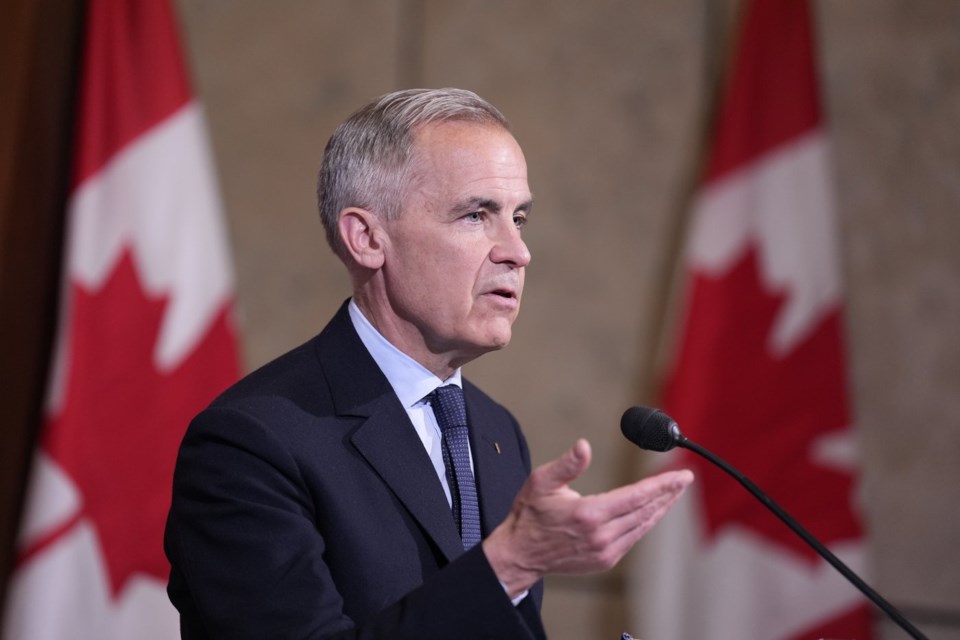OTTAWA ‚ÄĒ If Prime Minister Mark Carney signs on to U.S. President Donald Trump's proposed "Golden Dome" missile defence shield, he could be committing Canada to a project with a ballooning price tag, an anti-weapons proliferation group said Thursday.
Jessica West ‚ÄĒ a senior researcher at Project Ploughshares, a Canadian peace research institute based in Waterloo, Ont. ‚ÄĒ warned during an interview that there are a lot of unanswered questions about the project.
They include whether Canada's Norad modernization would count as a contribution to the project or whether the country is looking to buy into the very expensive space-based capabilities the U.S. is seeking.
"This is where I got a little bit worried about tying yourself to an incredibly expensive and not very resilient, but in fact brittle national defence capability that has a narrow set of capabilities and responds to a narrow set of threats in a time when I think the global security environment is being reshaped rapidly," she said.
"By the time anything is operational, we might be dealing with a very different set of priorities but have spent a whole whack of money."
The Golden Dome, a name that plays off of Israel’s Iron Dome anti-missile defence system, is a project Trump told the Pentagon to pursue. It would employ ground- and space-based weapons to detect and destroy advanced missiles mid-flight.
Trump said on Tuesday that Canada is looking to be included in the project and that he will ensure Canada pays its "fair share."
Carney said during a news conference on Wednesday Canada might be interested in investing in Trump's initiative but he wouldn't speak to the costs of joining.
Trump said the system ‚ÄĒ which he claimed will cost US$175-billion and be completed by 2029 ‚ÄĒ would be able to intercept missiles launched from the other side of the world or from space.
But the congressional budget watchdog estimates the system could cost $542 billion and take two decades just to launch the space-based missile interceptors.
The project has been described as a "system of systems" by experts, since it would be multi-layered and phased in over time.
Philip Ferguson, an expert in satellites at the University of Manitoba’s faculty of engineering, called Trump’s timeline unlikely.
‚ÄúA lot of people have been comparing this Golden Dome project to the Iron Dome in Israel and the scale difference is huge,‚ÄĚ he said. ‚ÄúYou're looking at launching hundreds or thousands of spacecraft in order just to cover the United States.‚ÄĚ
He said when U.S. President Ronald Reagan proposed such a space-based defence program back in the 1980s ‚ÄĒ which was dubbed ‚ÄúStar Wars‚ÄĚ by its critics ‚ÄĒ it was truly a "pie in the sky" proposal because not many satellites had been launched by 1983.
Satellites are now launched nearly every day and companies such as SpaceX have created massive, complex networks surrounding the planet. But just getting such a network in place requires an incredible amount of infrastructure.
"It's a massive task, and to say that it's going to be done in three years … I don't see that as being particularly feasible," said Ferguson.
West also cautioned that the proposed missile shield could trigger an arms race in space that no one would win, "except maybe defence contractors."
"It clearly involves a desire to place missile interceptors, obvious weapon systems, in space ‚ÄĒ which I think is a horrific game-changer when it comes to the long-standing effort to maintain peaceful uses of outer space," she said.
"It increases instability, particularly with China, who has been quite blunt that they don't see this as a welcome development. I think it increases incentives to develop more nuclear weapons capabilities … It's throwing gasoline on a campfire."
But former Liberal defence minister David Pratt said signing up could be a step in the right direction for Canada, even though there are a lot of unknowns at this point and the project seems about as ambitious as Reagan's "Star Wars" pitch.
Pratt said this could be an opportunity to correct the decision in 2005 by the government of Paul Martin not to join the U.S. ballistic missile defence program due to domestic political pressure.
Pratt served as defence minister in Martin's first cabinet but was defeated in the 2004 election by now-Conservative Leader Pierre Poilievre, and was no longer in cabinet when that decision was made.
Pratt said the decision led to a "disjointed" North American defence command structure that excluded Canada from decisions about countering ballistic missile threats to the country.
"This is potentially correcting a problem that's been around for 20 years as far as the disjointed command structure with Northcom being responsible for the interdiction and interception of threats," he said.
Multiple Senate committee reports have called on Canada to join a ballistic missile defence pact with the U.S. that goes beyond contributions to Norad monitoring and tracking.
"All of our NATO allies are covered and our friends in Asia, the South Koreans, the Japanese, the Australians, all have bought in to the concept of missile defence. So it's time that Canada got caught up in terms of its own defence and security," Pratt said.
"The prime minister is doing the right thing in terms of moving forward with this and, you know, I hope it will result in something tangible, because it's in the interest of Canada."
This report by The Canadian Press was first published May 22, 2025.
Kyle Duggan, The Canadian Press




